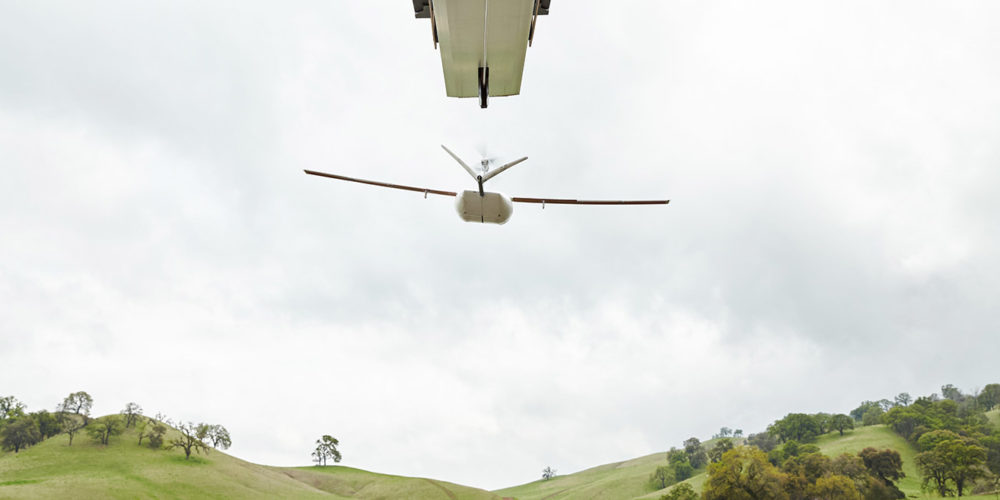Somewhere in rural Rwanda a small autonomous, fixed-wing aircraft whizzes off a launcher into the sky. Its cargo is precious, and time is of the essence. Instead of travelling by car over bumpy, undeveloped roads and risking delays caused by weather or civil or political unrest, this insulated box of life-saving blood will reach its patient in minutes, not hours.
The delivery is one of more than 31,000 packages of blood, medicine and vaccines that have been airdropped since 2016 by Zipline — the first drone delivery company to operate commercially — to hospitals and other medical facilities in Rwanda and Ghana.
Now, Embry-Riddle alumnus Joseph Marshall (’10) is working with the Federal Aviation Administration (FAA) and the North Carolina Department of Transportation (NCDOT) to expand Zipline’s medical delivery service to the United States.
“Zipline is saving lives,” says Marshall, who is the San Francisco-based company’s director of UAS flight operations. “For me, it was an opportunity to do something bigger than myself, for really the first time in my career.”
It may seem like the stuff of science fiction — delivery drones, self-driving semi-trucks and flying taxis — but Embry-Riddle alumni and faculty who are autonomous systems experts say what once was futuristic is now just on the horizon.
‘Slow and steady wins the race’
“Package delivery is closer than most realize. The concept is proven,” affirms Josh Olds (’11, ’15), president and co-founder of the Unmanned Safety Institute Inc.
Darshan Divakaran (’11), an executive aviation consultant and a UAS program engineer with NCDOT’s Division of Aviation, agrees, but says the technology advancements should not be rushed. “Companies and agencies are saying we can do beyond visual line-of-sight (BVLOS) operations, but the FAA needs data to prove the safety case, before they are OK with that.”
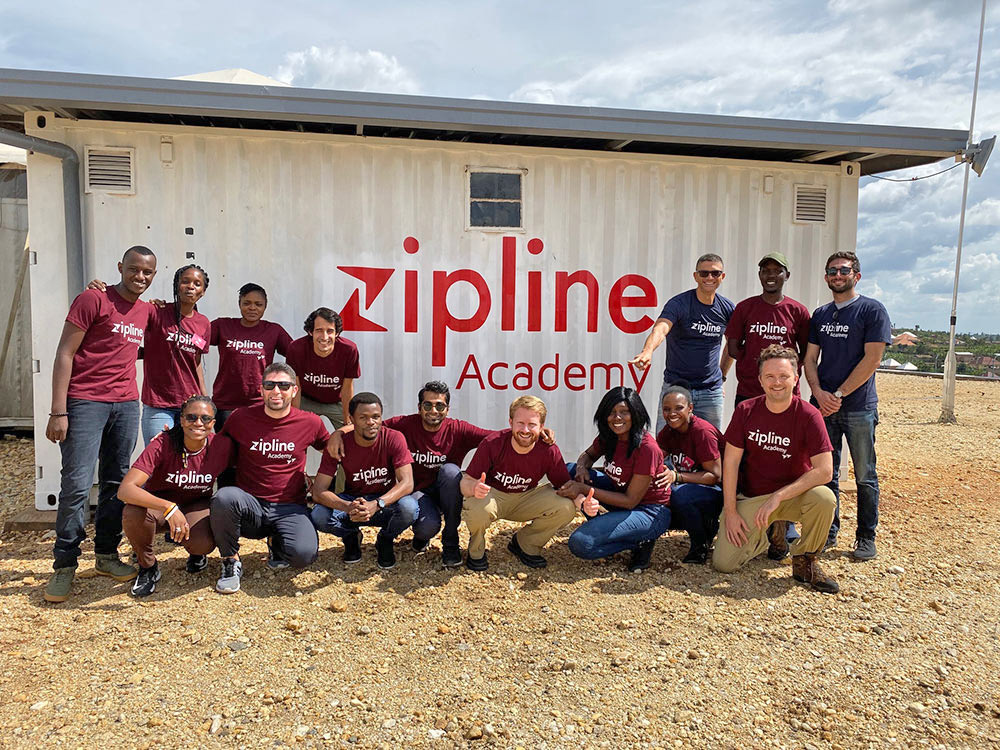
The FAA’s Unmanned Aircraft Systems (UAS) Integration Pilot Program (IPP) is establishing the foundation for airspace management and other regulations related to the integration of UAS into the National Airspace System. As part of the program, nine regions, including Raleigh, North Carolina, are working with the FAA to test commercial UAS applications.
North Carolina’s IPP status means the state’s private partners, including Zipline, are able to test more advanced UAS operations, Divakaran says. Data collected from those operations will help with the eventual integration of UAS on a larger scale.
Marshall acknowledges safety comes first. In manned aircraft, pilots are responsible for seeing and avoiding other aircraft. With an autonomous UAS, that responsibility shifts, he says. “With drones, it is a detect-and-avoid system that the FAA has to approve, so they are the ones held accountable if something happens. The rules slow us down, but the FAA has to do their due diligence.”
Still, Marshall predicts BVLOS drone delivery will be operational, at least in some regions in the United States, within the next one to three years. “[Zipline has] proven the technology is scalable,” he says. “Everyone wants to get their fast, but I think slow and steady wins the race.”
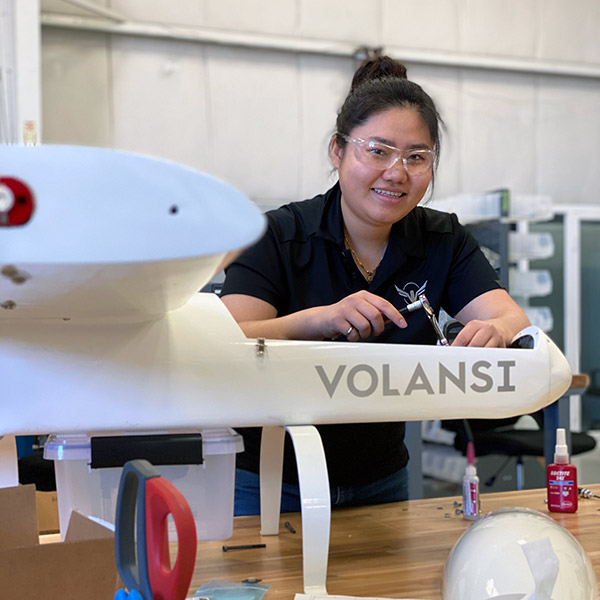
Size Matters
Mike Wiggins (’76), chair and professor of aeronautical science, says a challenge for UAS airspace integration is the fact that drones are too small for air traffic control to pick up. “They can’t detect these small things from the tower,” Wiggins says.
A joint study by Embry-Riddle and Oklahoma State University found that drones can only be seen about 30% of the time by pilots during the final approach phase of their flights. “Dangerous close encounters between aircraft and drones are becoming an increasingly common problem,” says Ryan J. Wallace, assistant professor of aeronautical science at Embry-Riddle and an author of the study.
Wiggins says there are some drone detection devices that are being used by airports, but they are not flawless. In December 2019, the FAA proposed a new UAS regulation that may help with this problem. (See sidebar: Managing the Highway in the Sky)
Jiyoung Hwang (’19) is an R&D integration and flight test engineer at Volansi, a Silicon Valley-based startup that builds and operates long-distance, high-payload UAS. The company would like to see larger aircraft, but the FAA’s current weight restriction mandates a maximum of 55 pounds under its Part 107 regulation.
“No matter the size of the UAV, a reliable, smart ‘brain’ is needed when autonomous flight is being considered,” Hwang says.
Hwang sees the industry’s future in fixed-wing UAS with vertical take-off and landing (VTOL) capabilities. Featuring electric rotors for takeoff and landing, and a gas pusher motor for horizontal flight, the Volansi autonomous delivery aircraft she’s developing will be able to transport a payload of up to 20 pounds over 360 miles.
“Fixed wing configurations allow longer flight time because they’re much more efficient. The beauty of having both systems is that you have the flexibility to take off and land anywhere, and fly longer with the same size power source,” Hwang says.
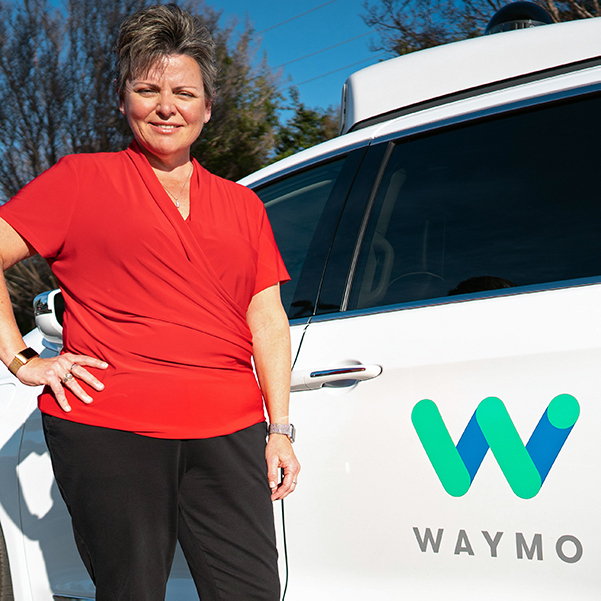
Driverless Cars and Trucks
Aerial drone delivery isn’t the only autonomous transportation system on the cusp of a commercial explosion. Self-driving freight trucks are already transporting cargo on some long-haul routes, albeit with a safety driver in the cab. As the technology advances and public acceptance increases, big rigs could soon be delivering goods with no human occupants.
Brent Terwilliger (’00, ’05), program chair of the M.S. in Unmanned Systems and associate dean of research for the College of Aeronautics, projects fully autonomous long-haul trucking may be common by 2031. Terwilliger says it won’t happen right away, or all at once. “[But] when the market can sustain it, when the efficiency is realizable, it’s going to happen.”
The trucking industry isn’t the only one that will be transformed by advancements in autonomy. Several ride-sharing companies are investing in the technology, too.
Self-driving technology company Waymo, formerly the Google self-driving car project, has logged more than 20 million miles on public roads, says Tracy Murrell, director of safety operations for the company and a current Embry-Riddle graduate student. Waymo One is the company’s fully autonomous ride-hailing service serving more than 1,500 riders in the Phoenix-metro area, but none are currently available for sale.
“Our vehicles recognize construction zones, school zones and other unique situations and take appropriate action in those areas,” Murrell says. “Meanwhile, we are heavily investing in weather testing from foggy San Francisco to snowy Michigan and rainy Washington State, to ensure that our vehicles learn to drive in a variety of challenging weather conditions.”
Murrell says Waymo’s investment in custom-designing its hardware sensor suite, and over a decade of experience developing the complex machine learning behind its self-driving technology, positively impacts its deployment of Level 4 autonomous capable vehicles.
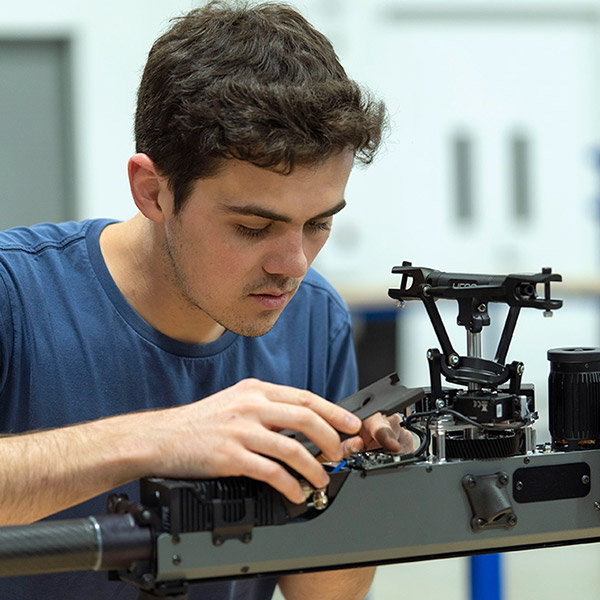
A Complicated System
From an environment perspective, fully automated vehicles have more obstacles than UAS, when it comes to integration.
Will Shaler (’14), a systems engineer at Anduril Industries who participated in robotics and automation competitions as a student at Embry-Riddle, says, “It’s much more difficult to deal with an autonomous [ground] vehicle. Just to get from one place to another, you need a GPS and an INS (inertial navigation system), and it needs to be much more accurate. You’re moving much slower and more precisely than an aircraft … you have obstacle avoidance, complications with wheel slip, with localization. It requires a whole different approach.”
However, Eric Coyle, associate professor of mechanical engineering, says autonomous cars do have an advantage over UAS. “It’s much harder to deal [with UAS] when something goes wrong. You can’t just cut the motors off and be safe. With a car, you can usually coast or brake to a stop and move to a safe area.”
Training the Neural Network
Autonomous systems have come a long way in a relatively short time, thanks to developments in how they “learn.”
“One of the big advances that’s come recently is the learning-based approaches,” says Patrick Currier, associate chair and associate professor of mechanical engineering. In the “old-school method,” you would try to basically program a vehicle to reduce an image down to certain objects, so the computer could understand how to react to those objects — be it a car, a person or a trash bin.
“The new way of classifying objects is using neural network technology and basically teaching the network what a human is, or what a car is, and then letting that network process images as they come in and classify them and detect them [in realtime],” Currier says.
That method gives much better results, but Currier cautions that it can also fail unpredictably. “No one has a neural network analysis tool that can tell you why it did what it did. The best method right now is to throw enough data at the model so it fails less often.”
A Safer Equation
Murrell, who also spent several years working at the National Transportation Safety Board, says the calculus is simple, and it favors autonomous cars. “The statistics are staggering: Every year, 1.35 million people die around the world in traffic crashes, and 94% of crashes in the U.S. involve human error.
“From what we’ve seen, riding is believing. As with most new technologies, it’s hard to trust what you’re not familiar with. As the technology develops and more people connect with our World’s Most Experienced Driver, consumer acceptance will follow.”
“I look at the aircraft — even though they are smaller — and the crews monitoring them, no differently than I would a Boeing aircraft or Delta Air Lines flight crew. … If we fail to maintain that mindset, safety will naturally be degraded.”
In addition to safer roads, autonomous systems promise greater efficiency, says Ken Witcher (’02), dean of the College of Aeronautics. Cities with large populations stand to benefit the most. With an autonomous urban mobility system, vehicles could be driven inches apart at a high speed, with a low risk of human error — allowing for quicker, safer and less stressful travel, he says.
“We can’t continue to build new freeways, so we have to find a way to use our current infrastructure in a more efficient way,” Witcher explains.
Beyond Freeways
If fully autonomous cars are possible in the medium term, urban air mobility (UAM) — low-altitude, on-demand passenger and cargo transportation services, commonly referred to as air taxis — is just over the horizon. Investment in this sector has grown substantially; most recently, Toyota invested $394 million in Joby Aviation, a company that boasts a four-passenger UAM aircraft capable of VTOL.
Paul Andreoli (’18), an unmanned aircraft pilot for ULC Robotics and a New York City resident, envisions a day when UAM aircraft will shuttle Manhattan residents to weekend vacation homes in the Hamptons, avoiding traffic-snarled highways. “I think this is the next hurdle in aviation and the future of modern-day urban transportation,” he says.
Pat Anderson, professor of aerospace engineering, agrees. “Models show a very favorable chunk of a very large market of intercity travel can be absorbed in a UAM network,” he says, but it comes with two significant and interlinked challenges.
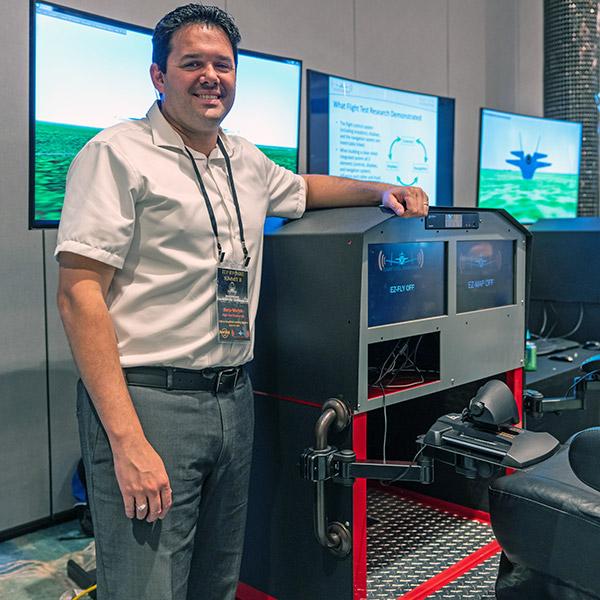
The first is noise, not just from the engines, but from the propellers. Anderson is researching solutions to this problem at Embry-Riddle’s Eagle Flight Research Center in Daytona Beach, Florida, where he serves as director. “The ability of a propulsive electric motor to turn a rotor at low RPM with the required high torque makes the rotor very quiet, car-like quiet,” he says.
The second challenge is battery power. Though battery technology improves every day, Anderson says it won’t beat fossil fuels in this decade.
“Batteries are not scalable to light-weight, high-energy operations,” he says. “The good news is that battery electric systems can be replaced by hybrid systems that will work today, and fixed-pitch rotors can by replaced by rotor systems. With the deployment of both of these technologies, the UAM vehicle is scalable.”
Also working to scale the technology, Borja Martos (’04, ’06), president of engineering at Flight Level Engineering, is developing simplified vehicle operations for future UAM aircraft that will allow nontraditional pilots to fly them. “There are not enough pilots available to operate all the Uber flying vehicles in the world,” he says. “The idea is that [UAM] wouldn’t require a pilot, but more of a manager or operator.” His company is engineering one basic control scheme that is “agnostic of the aircraft configuration” for this purpose.
There are definite steppingstones to mature the public confidence in automation, Martos says. “The desire to progress to a pure passenger model is there. This work is in direct support of that, to make it easier for pilot licensing and operations of these vehicles.”
In the short term, Martos says UAM will likely launch with a traditional pilot. “That’ll have to change for the UAM model to be profitable,” he adds.
‘Moonshot’
With several FAA approvals still pending for UAS operations, UAM-for-hire is likely much further from reality at this point. But alumni and faculty experts, alike, say it will happen … someday.
“The next decade is really going to be the decade of unlocking the potential and economic viability of UAS,” Marshall says. “And I think UAM won’t be far behind. It’s the wave of the future.”
“This is my generation’s moonshot,” Terwilliger adds. “This is our way to contribute to positively changing the world.”
